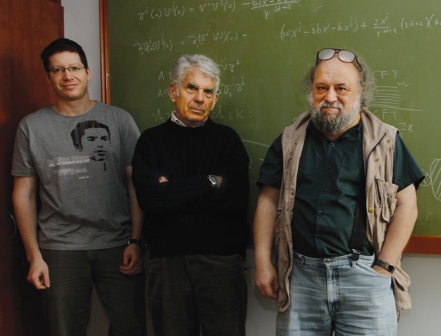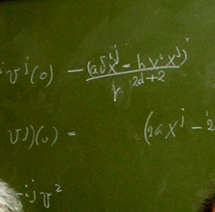The LHC particle accelerator in CERN – the European Laboratory for Particle Physics – near Geneva, is expecting big discoveries in the near future. By big, of course, they mean very, very small. The accelerator has the capacity to reveal the existence of forces and particles that have been beyond the reach of science until now: particles so small that they are dwarfed by the protons and neutrons in the nucleus of an atom. If protons and neutrons measure a millionth of a billionth of a meter, the particles scientists hope to observe in the LHC are sized around a billionth of a billionth of a meter – an atto-meter. Inside the LHC, immensely powerful forces are exerted on these minuscule particles, bringing science into uncharted regions. What will be found there?
Physicists, in truth, do not know what to expect. Nevertheless, they try to plan for all possibilities, using the tools they have at hand to endeavor to make sense of any new phenomena, particles or forces they might encounter. Can such key tools as quantum field theory describe this new region in physics, in which such tiny particles exist on extremely small-distance scales and with enormously high energies? Quantum field theory provides the framework for particle physics, and it is, in a very real sense, the basis of everything we know about the physical world. This theory is the unavoidable result of attempts to reconcile the field of quantum mechanics founded by Bohr and Heisenberg with Einstein’s Theory of Special Relativity.
One such attempt to formulate a general principle for quantum field theory was put forward by the British physicist John Cardy in 1988. According to his theorem, inequalities arise in systems with known “rules” that involve large numbers of factors. The states of these systems cannot be explained just through knowing the rules and the various players. Examples of such systems include stock markets, traffic patterns and weather. The inequalities transpire between degrees of freedom: the degrees of freedom existing at short-distance scales (for example the scales of the new particles that LHC researchers hope to discover) versus those at longer-distance scales (for instance in the forms of matter we know today).
If Cardy’s theory proves correct, it might provide an explanation of how we arrive at the Standard Model – the main theory of particle physics in use today – when a system of infinitesimally small particles at small-distance scales and very high energies cools down. We might even begin to understand how the world as we know it arises out of a complex universe of subatomic particles and powerful forces.
In 1986, about two years before Cardy presented his theory, another physicist, Alexander Zamolodchikov, had shown that this inequality between degrees of freedom on short-distance scales exists in two-dimensional systems (one dimension of space and one of time). Cardy took the idea one step further, theorizing a similar inequality in a four-dimensional system (three of space and one of time). But the theory remained open for the next 23 years, until one evening a few months ago, when two Weizmann Institute theoretical physicists were relaxing on a beach on an Aegean island. The two were Prof. Adam Schwimmer of the Physics of Complex Systems Department and Dr. Zohar Komargodski, a recent addition to the Particle Physics and Astrophysics faculty and an Institute alumnus who recently completed postdoctoral work at the Institute for Advanced Study, Princeton.
For the last few years, Schwimmer and Komargodski had been looking for a way to prove Cardy’s theorem and turn it into an accepted axiom. They had traded ideas and explored a number of different avenues, but none had really panned out. But that evening, sitting on the Aegean sands and relaxing between lectures in a scientific conference they were attending, the two began to discuss their old problem. As the sun set over the blue water, the solution seem to float up to them: Although none of the methods they had applied to the problem had yielded the long-awaited proof, they realized that four or five of their beginnings might be combined into a framework on which they could erect that proof.
So far, a number of physicists have checked the proof and announced that it stands up to various challenges. The Institute scientists say that it must be shown to withstand a number of further challenges before it can be completely accepted. Even so, physicists in a number of different fields have begun to envision new applications of the theorem, now that it appears to stand on somewhat solid ground. In particular, it could prove to be a valuable tool in interpreting LHC results in which scientists are not only searching for new particles, but for evidence for such models as supersymmetry that will help to explain the physical world.
Dr. Zohar Komargodski’s research is supported by the Peter and Patricia Gruber Awards.

